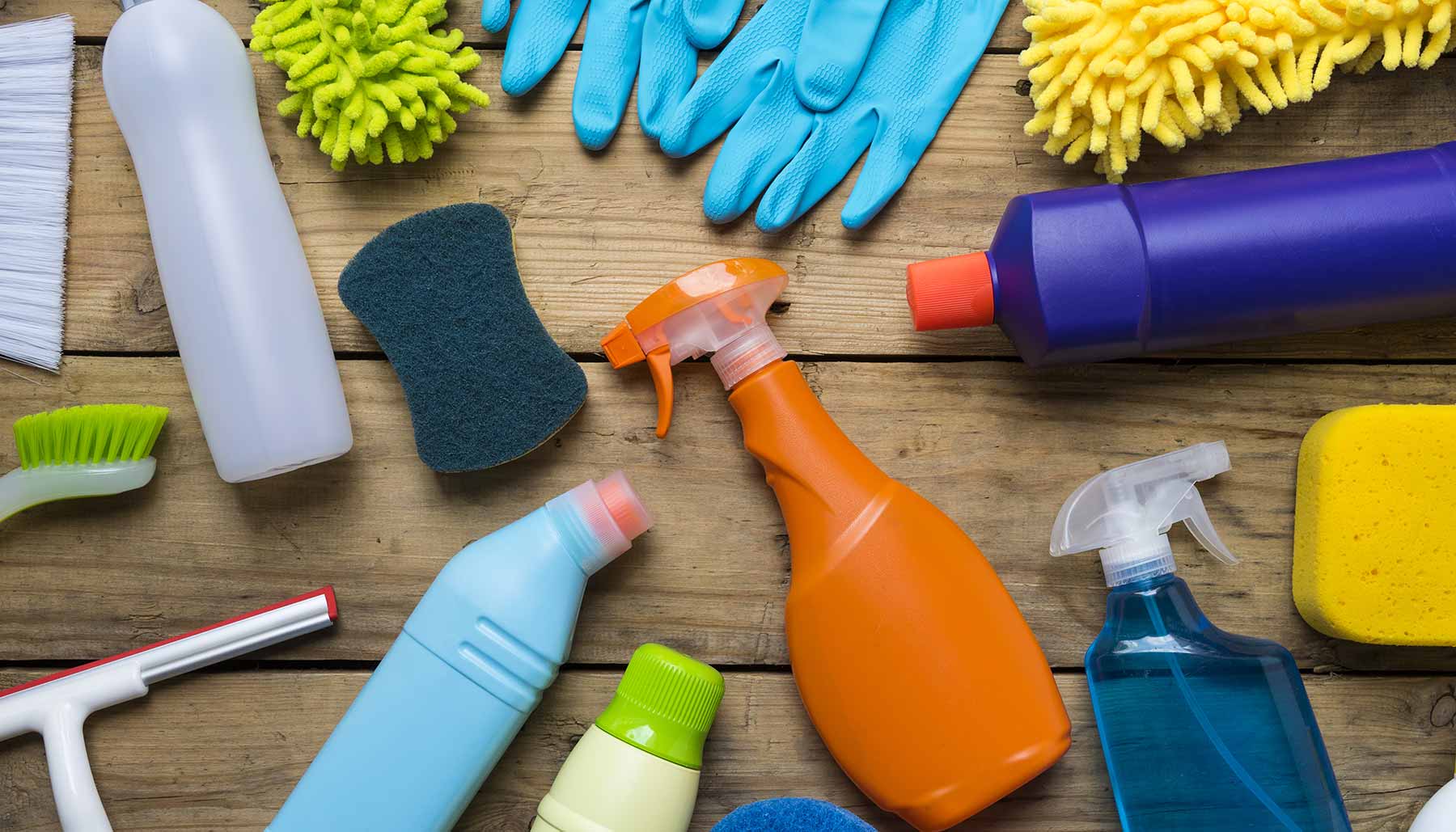Everyone wants a sparkling clean home, but we all want to get it spotless with a little less elbow grease. That’s the main reason why people reach for the ultra-powerful cleaners, right?
Related: How to Love Cleaning Your House
But sometimes, people get a little wild while in search of a deep cleaning solution. Maybe a product didn’t work as well as you had hoped, so you reach for another to finish the job. Or, perhaps you mixed two household cleaners together in hopes of concocting a better, stronger solution.
If this sounds like you, I need you to step away from the spray bottle.
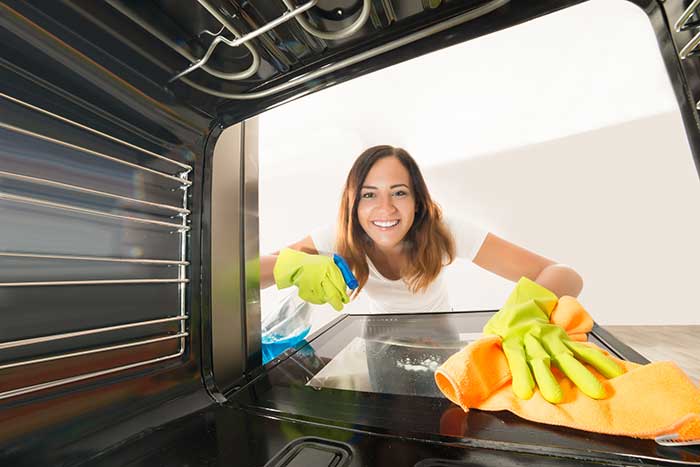
Mixing cleaning products seems harmless enough. These cleaning and disinfecting products are supposed to be safe for use inside our homes. While it’s true that household cleaning products can be safe when used as directed, mixing them often crosses a line into unsafe territory.
Why? Well, because most of these commercially available cleaners contain chemicals to get the job done. It’s when these chemicals mix and react with each other that you could be harming your health or the health of others in your home.
Surprisingly, it is not just chemicals, like bleach or ammonia, either. Non-toxic all-stars like vinegar are on this list too!
Related: The Best Eco-Friendly Cleaning Products for a Spotless Home
Before you start scrubbing the kitchen counters or shining up the bathtub, you should read this list first. Otherwise, you could unintentionally be playing chemist… with dire consequences. Some of these combinations can even be deadly at high enough concentrations. So, whether you have pets, a spouse, kids, roommates, or it’s just yourself, do yourself a favor and check these out.
Bleach and Ammonia
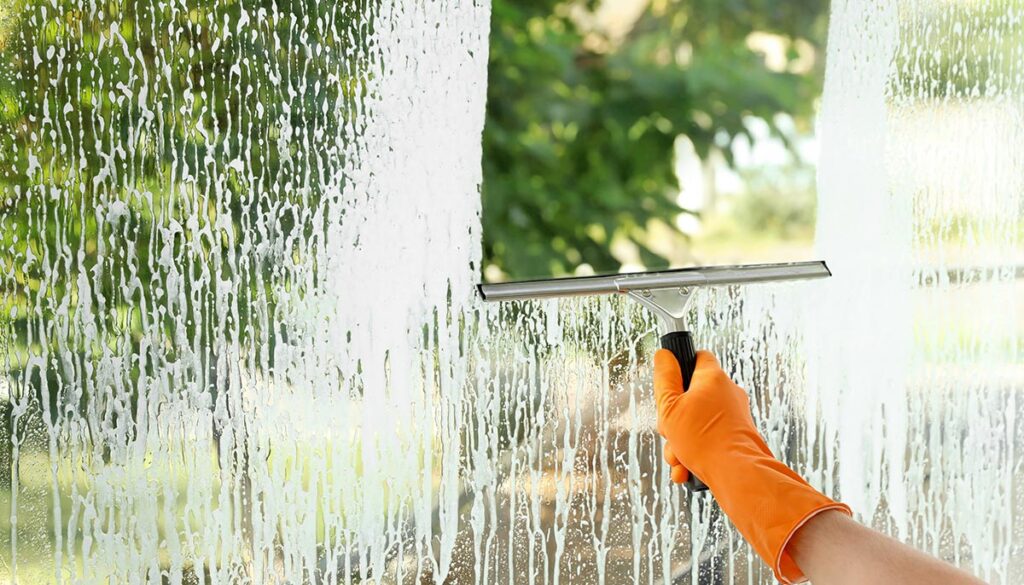
When talking about not mixing cleaning products, bleach and ammonia are always at the top of the list. It’s one of the most well-known combinations to avoid. That’s because these two are some of the most commonly used ingredients in household cleaners. As you can guess, that also makes it one of the most common examples of consumers unintentionally combining them.
Chlorine bleach is found in many disinfectants, whitening laundry products, toilet and bathroom cleaners, mildew removers, and more – just to name a few examples. Ammonia pops up in window and glass cleaners, all-purpose cleaners, oven cleaners, toilet cleaners, and plenty more. And while those ingredients are there, there isn’t a federal law requiring ingredient disclosure for cleaning products.
Mixing chlorine bleach and ammonia results in a chemical reaction, creating a toxic fume of chloramine gas. If there’s a high enough concentration of the stuff, it can be lethal.
Bleach and Rubbing Alcohol
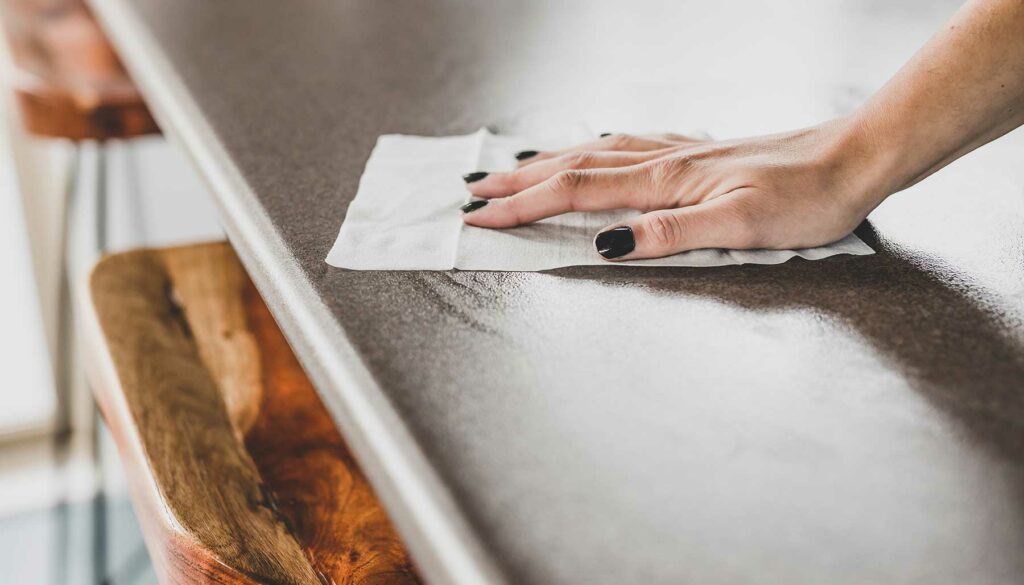
Alcohol pops up in some pretty popular cleaning products, like disinfecting wipes (Lysol, Arm & Hammer, Clorox) and multi-purpose cleaners (Method, Mr. Clean, Fantastik). Many people simply use rubbing alcohol diluted with water to disinfect many things, too. It’s great for disinfecting hard-surface countertops, like granite and quartz. I’ve seen it used to clean chrome, stainless steel, and glass without streaking.
The problem arises when you’re working to disinfect a bathroom or countertop, and you mix products containing alcohol with bleach. When you put these two ingredients together, they create chloroform. It’s highly toxic if inhaled or swallowed. Exposure can harm the eyes, liver, kidneys, and nervous system. It might also cause cancer.
Bleach and Vinegar
Oh, look. It’s bleach again!

No, not that Bleach.
Vinegar is a great, non-toxic cleaning option that a lot of people use. It is especially popular in homes with kids or pets. But despite this being a safer cleaning ingredient, it can become dangerous when mixed with bleach. And that might be easier to do than you think, considering how many household products contain bleach.
Putting chlorine bleach and vinegar together can be hazardous. Vinegar, or any other acidic product, will mix with bleach to create chlorine gas. It can cause coughing, breathing problems, burning, watery eyes, blistering skin, and more. Chlorine gas can also be dangerous to us because it reacts with water to form acids – and, well, our bodies have a lot of water in them. When it comes into contact with water, it forms acids, which then damage tissues.
Chlorine gas is more dense than air, so it will collect close to the ground and spread rapidly across the space. It’s also worth noting that it’s also highly reactive with certain compounds or chemicals, which can cause an explosive reaction!
Bleach and Pretty Much Anything Else
Have you noticed a trend so far? It’s probably obvious, but I have to mention that mixing bleach with just about anything is a bad idea. If you’re using a product containing chlorine bleach, it’s imperative not to use anything else. Even non-toxic cleaning solutions can be bad news when mixed with bleach.
Again, there are no federal regulations mandating ingredient disclosure on a cleaning product’s label. Without having made the cleaner yourself, you might not even have the full list of ingredients in there. It’s best to play it safe when it comes to bleach, considering it reacts with just about everything else.
Vinegar and Hydrogen Peroxide
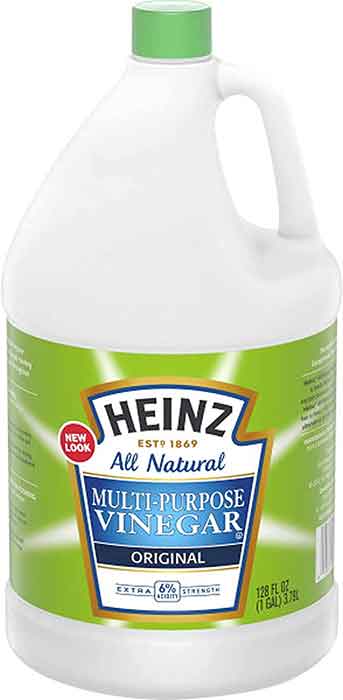
I know that vinegar is one of the best non-toxic all-purpose cleaners. It’s safe for pets and kids. I mean, we cook with and eat the stuff. That veil of “safeness” can often lead to people letting their guards down and mixing vinegar with other cleaning agents.
Vinegar does a good job as a disinfectant because it destroys some bacteria and viruses. That’s because of its acidic nature. The liquid is actually only comprised of water, acetic acid, and some trace elements. When that acetic acid mixes with hydrogen peroxide, another common household cleaner, you end up with peracetic acid. This stuff poses danger to the eyes, throat, nose, skin, and lungs. We’re talking about eye irritation and damage, corneal burns, excessive fluid in the lungs, skin irritation and blisters, and nose and throat irritation.
In really high concentrations, this chemical can also be highly reactive. Without proper precautions, there is a risk of fire or explosion hazards.
Vinegar and Baking Soda
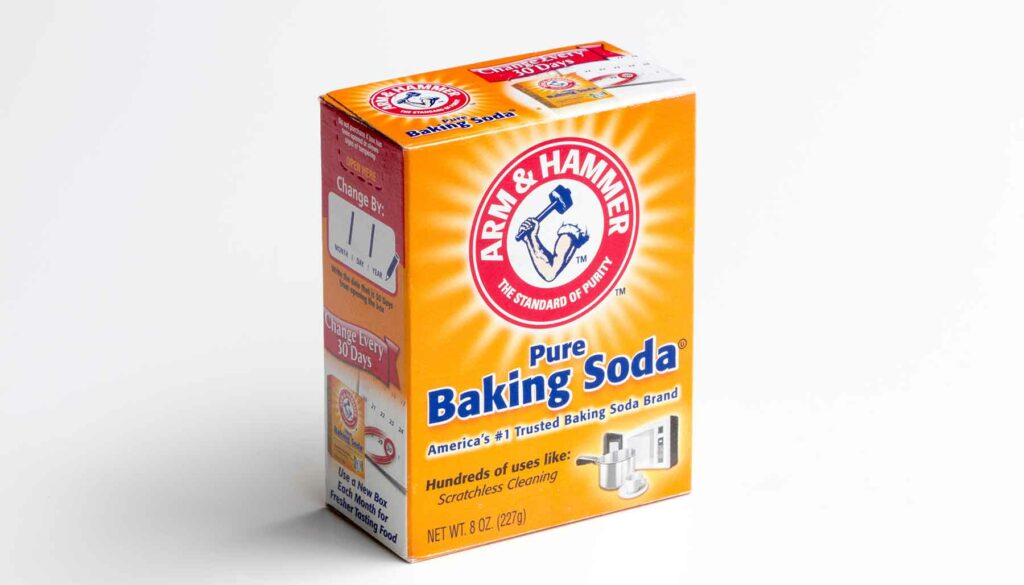
Unlike the rest of the mixtures on this list, you can’t mix vinegar and baking soda together because it doesn’t do anything. You heard me! When you mix baking soda and vinegar together, they basically cancel each other out. You might as well just scrub with water.
We already know that vinegar is an acid. Baking soda, or bicarbonate of soda, is a base. So, when an acid and a base are put together, they react to neutralize the acid and base properties. I won’t bore you with the ions, sodium acetate, carbonic acid, and a decomposition reaction. However, all this leaves you with water, carbon dioxide, acetate, and sodium ions. That carbon dioxide is what produces all the bubbles. That same reaction is what makes batter rise in baking!
Once the bubbles are gone, though, you’re pretty much left with glorified water. Not the powerful cleaner you thought it was, right?
Oxalic Acid and Trichloroisocyanuric Acid
These words might not look familiar to everyone, but they are ingredients in some household cleaners. You likely have at least one of them under the sink right now. Bar Keepers Friend is an oxalic acid-based cleaner, while Ajax and Comet powders are trichloroisocyanuric acid. Many people swear by these all-purpose powder cleaners that promise to leave hard surfaces squeaky-clean.
On their own, extended skin contact with one of these products can wind up causing irritation, peeling, and contact dermatitis. However, mixing oxalic acid and trichloroisocyanuric acid together is even worse. Just like with some other dangerous cleaning product combinations, this can create chlorine gas. Again, this stuff can cause breathing problems, watery eyes, blistering skin, and more. It also reacts with the water in our bodies to form acids and damage tissues.
Different Drain Cleaners

Clogged drains are a pain for sure. It’s one of those things that can derail an entire day. That’s why drain cleaners exist, so people can hopefully unclog their sinks quickly and without waiting on a professional.
I actually don’t suggest that anyone use store-bought chemical drain cleaners. They damage your plumbing, and they also contribute to soil and water pollution.
In any case, if you absolutely need to use a liquid drain cleaner for a quick-fix, don’t mix and match brands. It is really tempting to reach for a bottle of Liquid Plumr after Drano didn’t get the job done. However, the combination could be bad for both your health and your plumbing. You never know if the mixture could cause irritation or other health issues, or cause serious damage to your pipes. Some drain cleaners are acid based, with sulfuric acid or hydrochloric acid. Others are alkaline-based with sodium hydroxide or potassium hydroxide. There are some with bleach, as well.
If your chemical drain cleaner didn’t get the job done, it’s probably time to call a professional plumber to work some magic.


